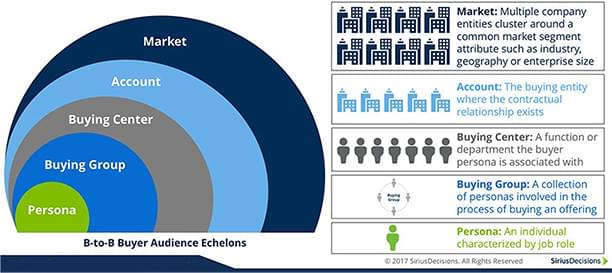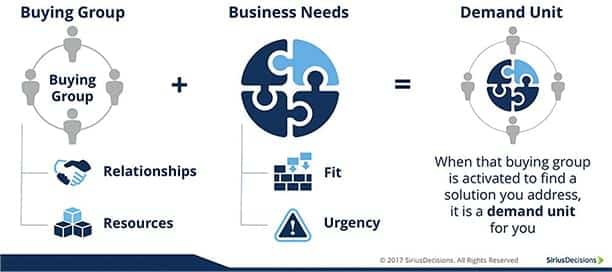

Account Based Marketing (ABM) is often seen as a powerful but low volume tool. Quality definitely, but not quantity. Traditionally it’s been difficult for organizations to accurately identify target accounts, and sales/marketing goal misalignment makes execution difficult. As a result, most organizations use ABM sparingly to target a few potentially lucrative opportunities.
That’s changing.
Now, forward-thinking organizations are embracing ABM on a broader scale. That way, you get the quality of ABM without sacrificing quantity. The results: higher conversion, increased margins, maximum customer lifetime value, more loyalty, and better-defined competitive difference.
That’s the why. Let’s look at the how.

B2B sales have traditionally relied on an understanding of buyer, lead, and account that ignores complexity.
Is the buyer the company? There are often multiple sales opportunities from within one company, so that can’t be the case. So is the buyer one decision maker? Decisions are made by groups not individuals, so that doesn’t work either.
The SiriusDecisions Demand Unit Waterfall recognizes these definitions as antiquated given today’s long, complicated sales cycles involving multiple decision makers. Instead, the waterfall introduces B2B buyer audience echelons, including multiple buying groups and buying centers within each account.
This new way of thinking empowers ABM at scale by redefining what we mean by buyer as demand units. The waterfall outlines how B2B sales and marketing professionals must structure their efforts around this concept to be successful.

The SiriusDecisions Demand Unit Waterfall and Predictive Analytics
Predictive analytics plays a crucial role in supporting alignment to this waterfall. Let’s look at each stage in turn.
1. Target demand: Map ideal customer profiles to addressable market
The first stage is to define your total addressable market (TAM). The aim is to understand and agree across departments how many potential demand units there are for your solution. Predictive analytics ties closely into this with intelligent prospect profiling, which goes beyond look-a-like data profiling to build a sophisticated target audience of ideal customer profiles based on thousands of internal and external data signals.
2. Active demand: Recognize signals indicating an intent to buy
The active demand stage is about discovering the demand units that are actively researching solutions to their business problem that your value proposition can address. The focus is on narrowing down your total addressable market into those most likely to convert to better target your sales and marketing activities. There’s a clear synergy with predictive analytics in that leveraging historic buying intent signals, you can predict future behavior, such as which demand units will convert, when, and what their total lifetime value could be. Predictive lead scoring then ranks leads in priority order by these factors, so sales and marketing can focus their activity accordingly. Poor marketing and sales alignment has always been a big hurdle for B2B demand generation, as both departments have different goals. The fundamental question what is a lead? may have different answers. This is an issue we must resolve to effectively target potential buying groups. The demand unit waterfall offers an answer, which predictive analytics ties into by creating a single customer understanding around which that all parties can unite.
3. Engaged demand: Personalize your messaging
The engaged demand stage occurs when a prospect or customer within the demand unit responds to you. This stage is the natural result of predictive analytics, which helps better define and target demand units. Better top-of-waterfall prospect profiling and predictive lead scoring mean sales and marketing activities are focused on the demand units most likely to convert. Both departments are therefore more effective and efficient. You know which customers and prospects you should target with which messaging and when. The result is higher conversion: more demand units moving more quickly through to the engaged demand stage.
4. Prioritized demand: Identify the best opportunities to pass onto sales
A demand unit moves into this stage when it crosses a threshold of engagement that justifies further interaction from your team. Complex buying funnels with multiple engagement channels traditionally mean lengthy buying cycles, high attrition and low conversion rates. Predictive analytics combat those issues by ensuring you’re targeting the right people, in the right way, at the right time. The advantage is that you can predict leads and opportunities that are most likely to convert, prioritized by revenue potential and/or customer lifetime value. This gives a clear matrix, as below; with likelihood to convert next to revenue potential / lifetime value so you can focus for example your best resources on A1 prospects. By focusing activity on your A1s, you maximize conversion likelihood – and speed – through the demand waterfall.
